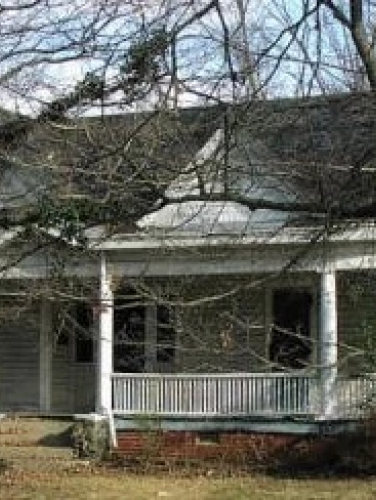
McQuay Farmhouse
(ca. 1882)
The homestead of the McQuay family for nearly 130 years, the McQuay Farmhouse reflects the once primarily rural character of Mecklenburg County.
3200 Tuckaseegee Road, Charlotte, NC 28208
Built in 1882 by Robert E. McQuay (1851-1904) with the help of his brother John, the McQuay Farmhouse sits on what was once part of a 110-acre farm purchased by their family in 1817. Construction of the house was aided significantly by the technological innovation of the railroad which made more readily available such prefabricated building elements as the vents and uniform wood shingles on the gables, the porch columns, and the pitched roof over the front steps. Members of the McQuay family owned and lived in this house for nearly 130 years. Situated about two miles from downtown Charlotte, the Folk Victorian style McQuay Farmhouse is a physical reminder of the proximity of Mecklenburg County’s rural landscape in the late 1800s and early 1900s.
Property Quick Links
Robert McQuay made his living by growing produce for sale in Charlotte. His primary crops were corn, fruit, and a variety of vegetables. They also kept cows, chickens, and bees. The McQuays maintained a self-sufficient lifestyle from the 1880s until the 1930s, making a modest living from crop sales. But Robert died in 1904, leaving his eight-year-old son Edgar as the man of the house. Edgar quit school to run the family farm, earning additional money working at nearby Lakewood Park amusement park that by 1910, featured a merry-go-round and other rides, a dance pavilion and zoo, swimming, and boating.
By 1910, fifty percent of Mecklenburg County residents lived within Charlotte’s city limits. Developers were constantly looking for land to meet the housing demand as farmers came to realize that selling their land was often more profitable than farming, especially as the boll weevil destroyed cotton crops. As a result, many farmers like Edgar found themselves pushed into factory work. In 1915, at the age of 18, Edgar went to work for the Ford Motor Company. Meanwhile, he and his Maude raised four children in the McQuay Farmhouse. Edgar transitioned to Ford’s new assembly plant on Statesville Avenue in 1925, building Model Ts and Model As until his death in 1938. His son Edgar Jr later studied engineering at N.C. State University, returning to Charlotte to work in the same Ford assembly plant where his father worked. By then, however, the facility was owned by the Douglas Aircraft Company, so Edgar Jr. went to work making missiles for the U.S. Army.
Directly across Tuckaseegee Road from their home, the McQuay family could watch the development of one of Charlotte’s earliest streetcar suburbs, Enderly Park. Launched in 1925 on the former estate of state legislator Sydenham Benoni Alexander, the community was the brainchild of his daughter and heir Julia McGehee Alexander, North Carolina’s second licensed female attorney. She hired John Nolen of Cambridge, Massachusetts – regarded as America’s “Father of City Planning” and known locally as the designer of Independence Park – to design the new neighborhood with such novel amenities as electric streetlights, telephone service, paved roads, and a dedicated trolley line.

